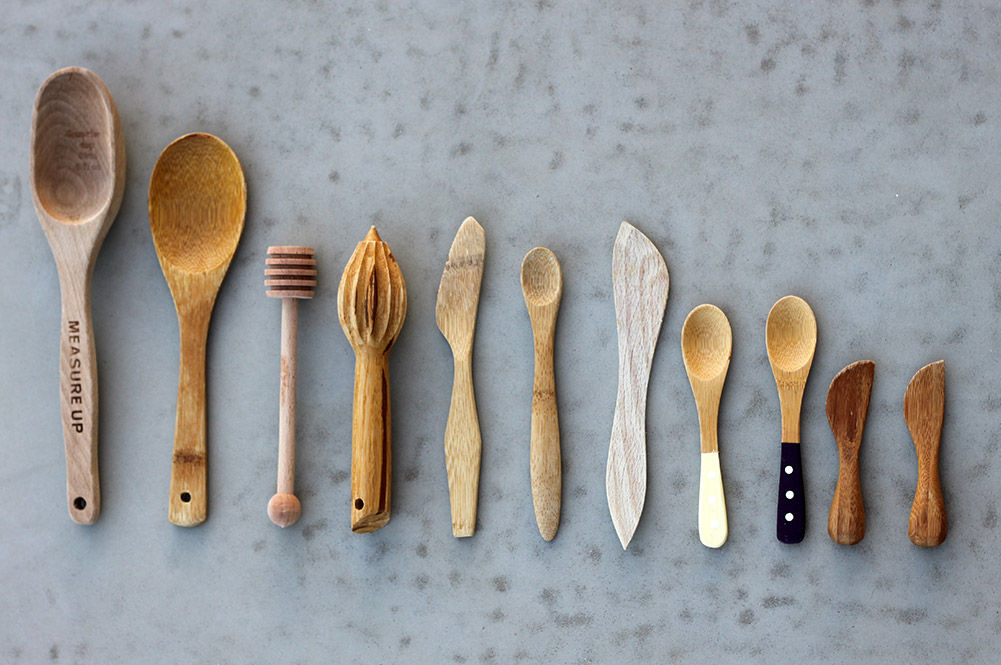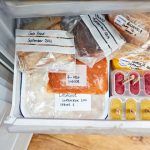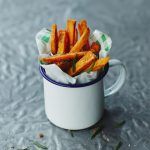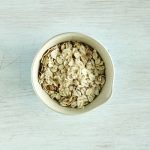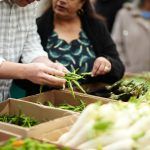One of the best decisions you can make for your health is to start setting small attainable goals. Totally changing they way you eat can seem overwhelming, so try a “stepladder” approach – focus on one small change until it becomes part of your daily routine, then add another, and another.
However, embarking on healthier habits takes a bit of planning. Luckily, I have some personal tricks and tips that make my life easier, and enable me to (most of time!) make the right choices.
Stock up
Keep your kitchen stocked with all the essentials that you and/or your family need. If you have run out of fresh produce, you will at least be able to whip up a decent meal with dry and tinned goods, rather than falling into the takeaway trap. The things it’s worth having at all times are beans, wholewheat pasta, coconut milk, curry pastes, wholegrain rice and flours, quality tomato sauce, and nut butters. I also like to keep lots of basic grains, such as quinoa, buckwheat, oats, millet, and barley.
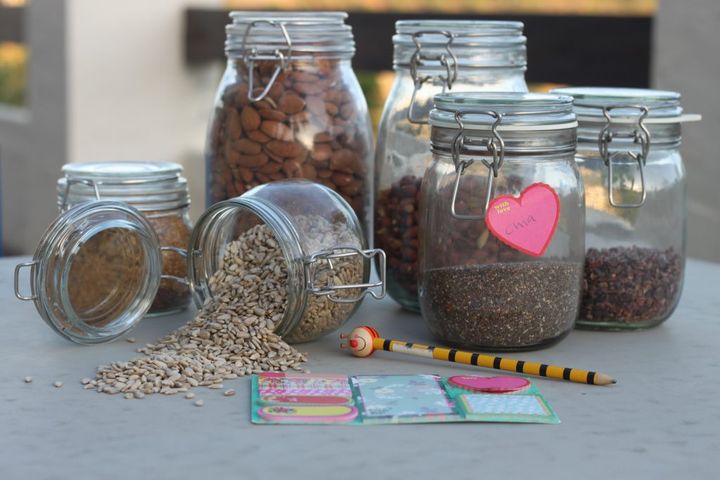
Nuts and seeds are a great natural source of vitamins, minerals, protein, fat, and fibre, and most of us don’t eat enough of them. Stay away from the pre-salted, fried versions, though – when buying nuts try to get them raw and unprocessed. I find it practical and easier on my wallet to bulk-buy certain products, such as nuts and seeds, as it works out cheaper in the long run that way. Keep them in jars around the kitchen, ready to be sprinkled on top of soups, salads, cereals, smoothies or dishes, and they also make fantastic on-the-go snacks.
While you are at it, when it comes to flours, grains and pastas, swap the white, refined stuff for wholegrains, which are bursting with fibre. Small changes like these can have a huge impact.
Stay fresh (when possible)
Keep fruits around where you are most likely to fall into unhealthy snacking. Yes, instead of keeping bowls of sweets, biscuits or crisps around the house, fill your bowls with oranges, clementines, apples, pears, bananas, and fruits that are pretty, tasty, and healthy. Arrange them in front of the telly, on the kitchen counter, and in the middle of the dining table or your office space. It’s often the case that we snack and eat not because we are hungry but because we are bored or thirsty – read on for tips on how to keep hunger at bay by staying hydrated.
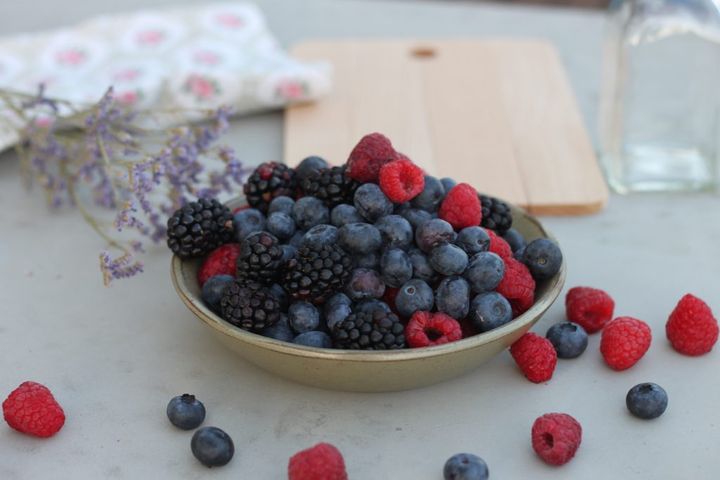
Buy fruits and veggies in season and locally. It is cheaper in the end, and whatever you can’t eat you can freeze in portion sizes and keep for smoothies, jams, or desserts.
Prep ahead
I go to the market once a week, and then spend thirty minutes pre-preparing my vegetables and fruits so that they are easy to access and cook with during the week. This means washing and drying salads, and then mixing them into sealed bags that go into the fridge. Carrots can be peeled and kept fresh for a couple of days in a water container (anything large enough to hold the carrots submerged in water will do) for quick and easy crudités. Leeks can be cleaned, washed, chopped and bagged, ready to use, as can broccoli, kale and a variety of other vegetables. These little tricks save me time, and enable me to cook a meal from scratch far more quickly during a full-on week!
Freeze it
Lets be realistic – most of us lead hectic lives, and as much as we might really want to, eating good food all the time can be difficult. This is where the freezer can make all the difference: cook in bulk, portion out, and freeze. When I’m having a particularly good “cooking day” and have the time, I bulk-cook certain dishes I know my family love, such as this super-healthy tomato sauce recipe, a lovely veggie pie, or family favourites like this classic Bolognese sauce. This way, I stay away from any nasty pre–packaged stuff, and have a quick, easy solution when I desperately need it.
Make sure to read up on how to get the most out of your freezer!
Keep it all visible
Keep healthy foods accessible and visual, both in and out of the fridge. Nuts, seeds, wholegrain rice and flours, dried fruits, bean pastes, pestos can all be stored in containers that keep them visible, and the list goes on. This is also a great way to reuse glass jars and if you have kids you can make a project of creatively labelling everything with them.
Keep your fridge in order by grouping ingredients separately in sections that are visible. This way you can keep track on what you have. Use one shelf for each food group: dairy, meats, vegetables and fruits. If you’re going to store fresh foods in bags, make sure you use the clear zip-lock type.
De-clutter
Clutter is one of the biggest causes of stress in our lives. When we clutter our lives physically and mentally, it drains our energy. If we truly want to live a healthy life, we need to de-clutter it first.
Start by clearing out your kitchen utensils and equipment. Very recently I evaluated what equipment I used on a daily basis and got rid of the rest – this included my microwave and bread-making machine! Hoarding appliances and equipment that never gets used takes up a lot of space, and I filled my newfound space with a juicer and a blender – two things that enable and remind me to make better choices, and they get used frequently as a result.
I also find that I have two or three of everything. Choose the better-quality utensil and give away the rest – if possible, take it all down to a car boot sale and let your trash be someone else’s treasure.
Start your healthier habits with a clean slate. But be aware that clutter is very stubborn. It sneaks right back to our lives very easily, as do old habits.
Flavoured waters everywhere
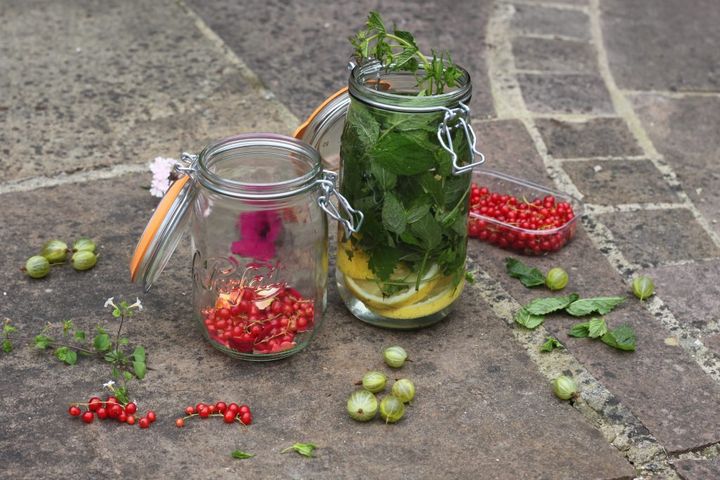
You’ll probably have heard about the effects of drinking sugary drinks but you may not be aware of some of the benefits of drinking more water.
I, like many, am not a great drinker of plain water. Therefore, I flavour it with fruits, homegrown herbs, and sometimes spices such as cinnamon sticks, cloves and cardamom. This can do great things for digestion and overall health. Herbs and spices have been used since ancient times for their medicinal properties, mostly concentrated into teas and tinctures, and more recently, their value as healthy meal ingredients is being realised.
I keep my flavoured waters in the fridge, so they’re nice and cold and ready to consume.
Here’s Danielle Hayley with her tips for healthy, fruit infused water:
No matter your lifestyle, cultivating healthy habits involves a bit of work and planning. The good news is that the more effort you put into your preparation, the more likely you are to succeed! What are your best-ever healthy tips? Share them below!
For more help becoming the best you can be, join our Healthier Happier You community and order your copy of Jamie’s Everyday Super Food!
